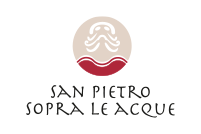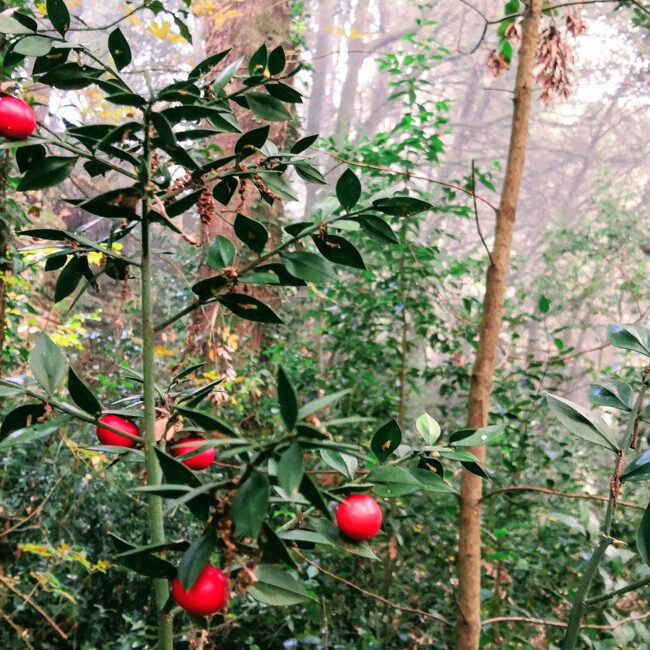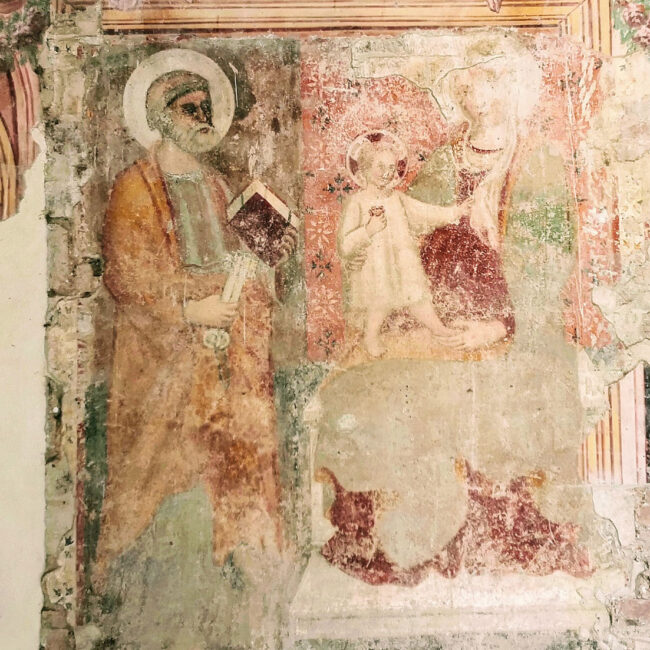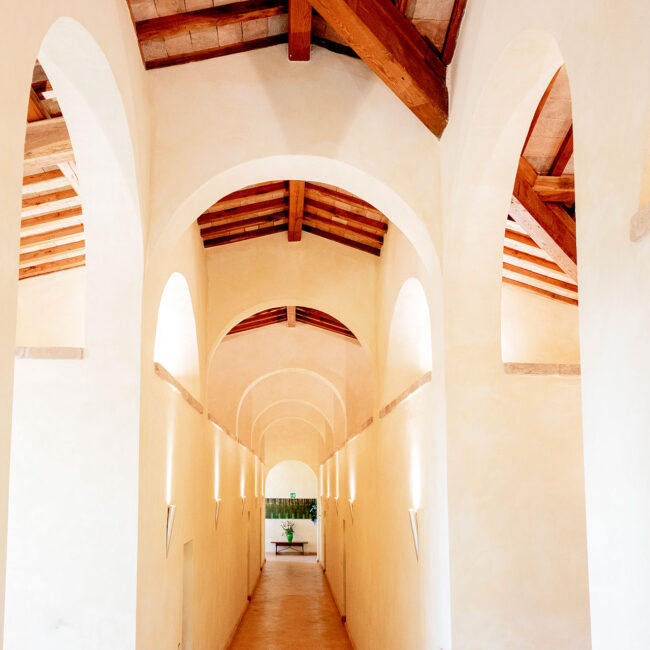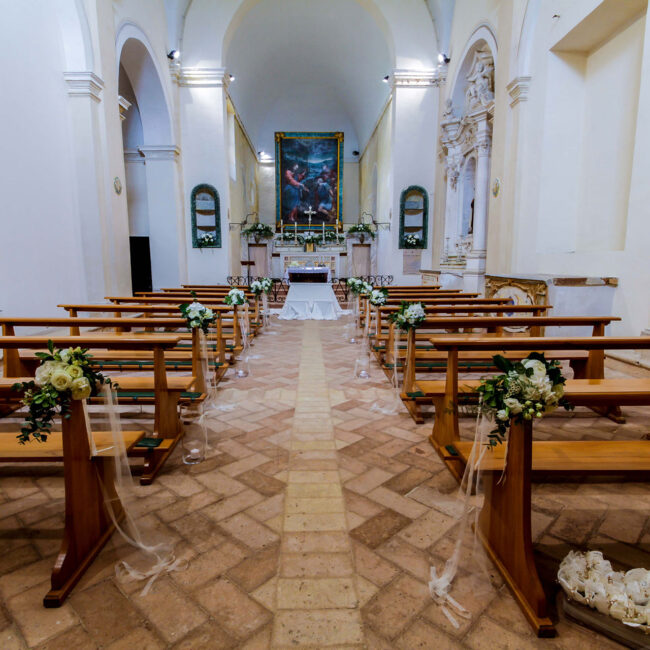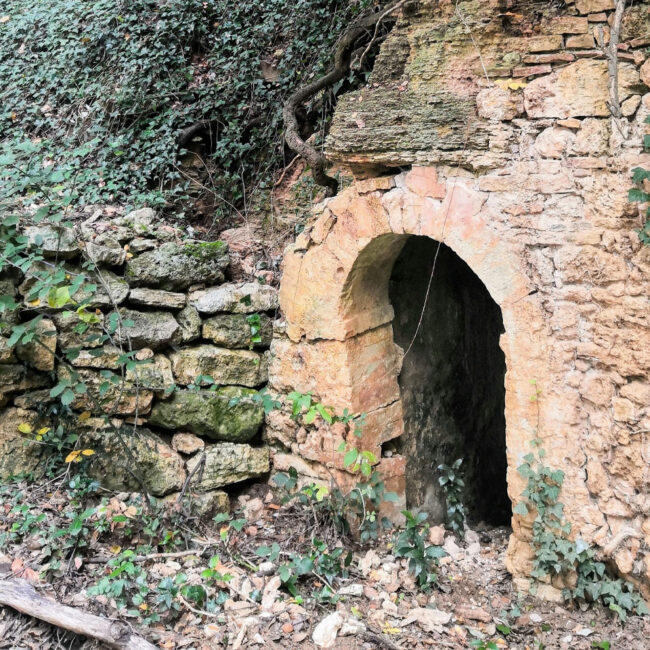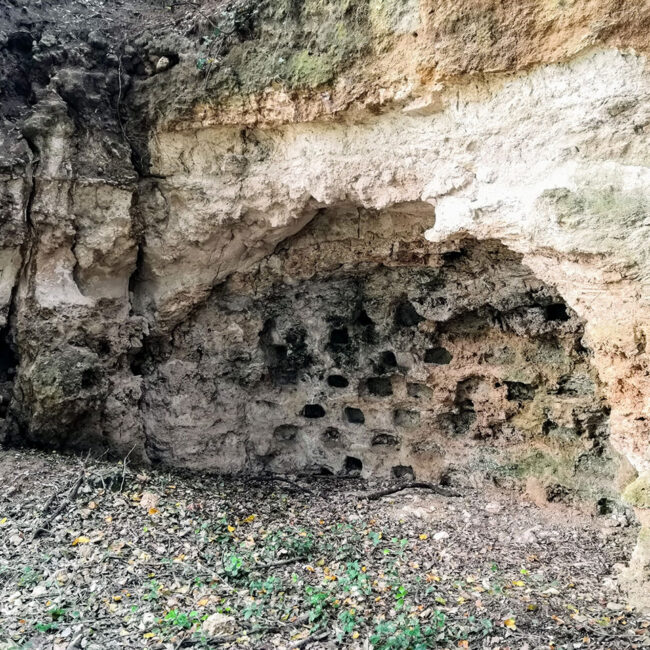in the historical / artistic context within the territory of Massa Martana
Its story
The church of San Pietro sopra le Acque (St. Peter above the Waters) and the adjoining convent of the Reformed Friars Minor (Franciscans) play an important role in the historical / artistic context within the territory of Massa Martana, both for the antiquity of the foundation and for the beauty of the site in which they stand, as well as for the outstanding artworks kept.
The name “Sopra le Acque” (“Above the Waters”) derives from the spring waters of which this place is rich at the base of the rocky wall delimiting the site to the north.
Unfortunately, there is still no exhaustive documentation reconstructing the history of these monuments. The only historical sources which have been handed down to us speak of SAN PIETRO SOPRACCQUA compound from the rebuilding of the church and the foundation of the convent in the first decades of the 17th century, during a period of relative prosperity for all the territory of Massa Martana due to its direct dependance on Rome after having freed itself from Todi.
This bond with Rome had beneficial repercussions – still visible even on our two buildings – in terms of funding and as for the style adopted in decoration and in furnishing of church and convent.
The most recent studies are those of Francesco Campagnani, a young scholar of local history. An account written in 1717 informs us that in the year 1614 a crumbling and very old little abbey church – so defined in a document dating back to 1275 – was demolished in order to build the current church of St. Peter.
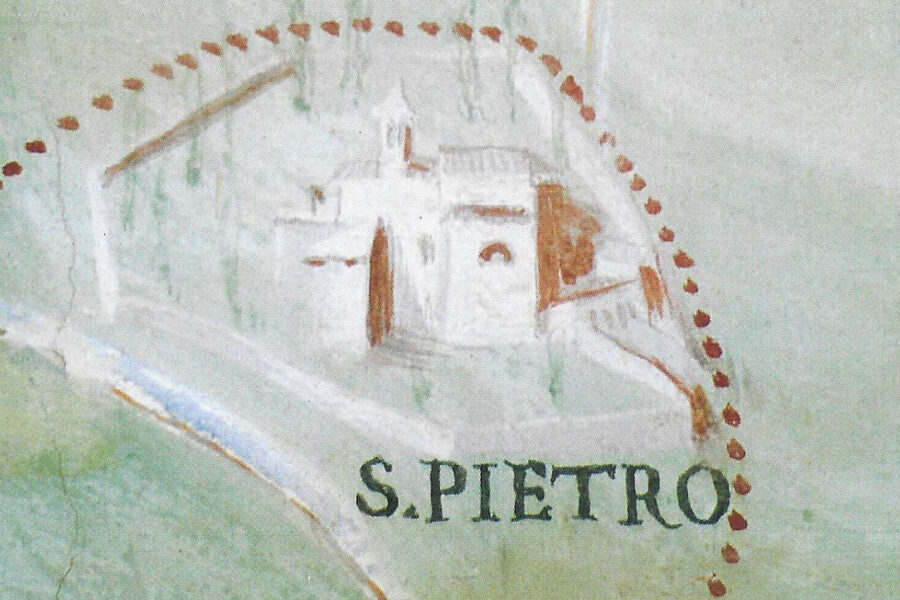
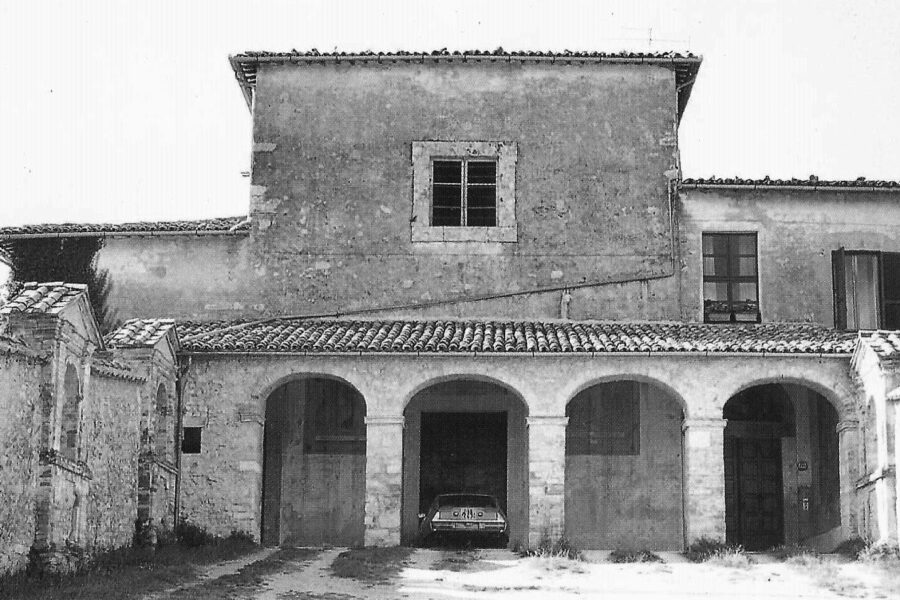
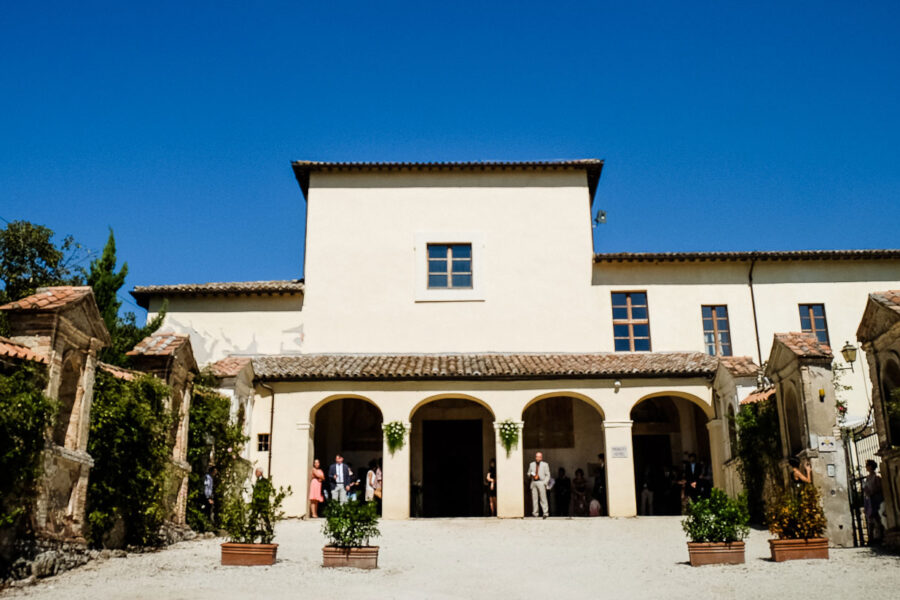
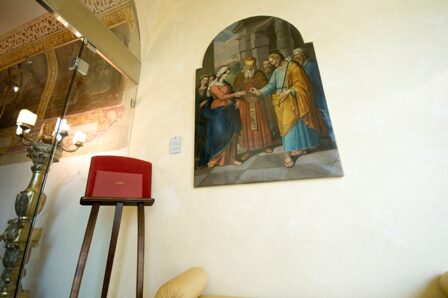
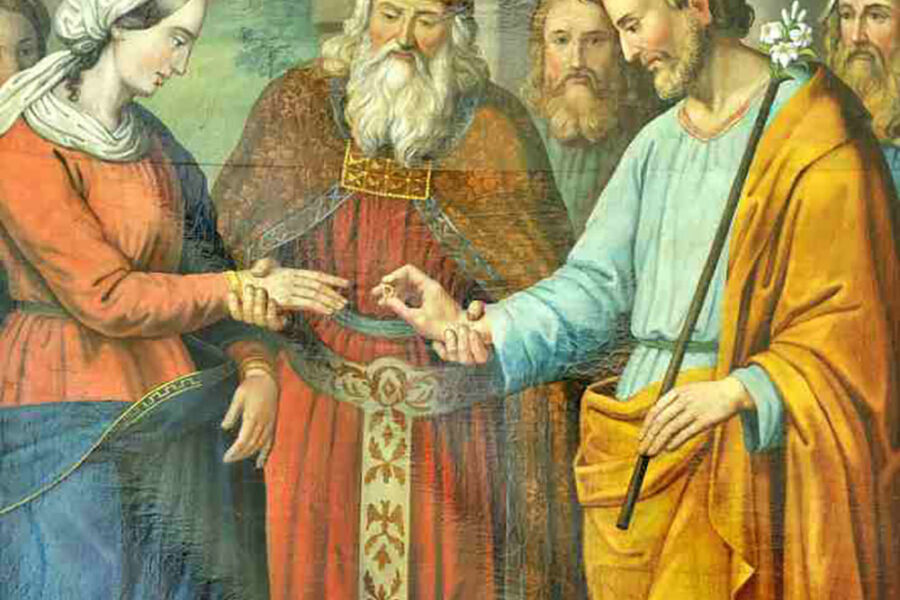
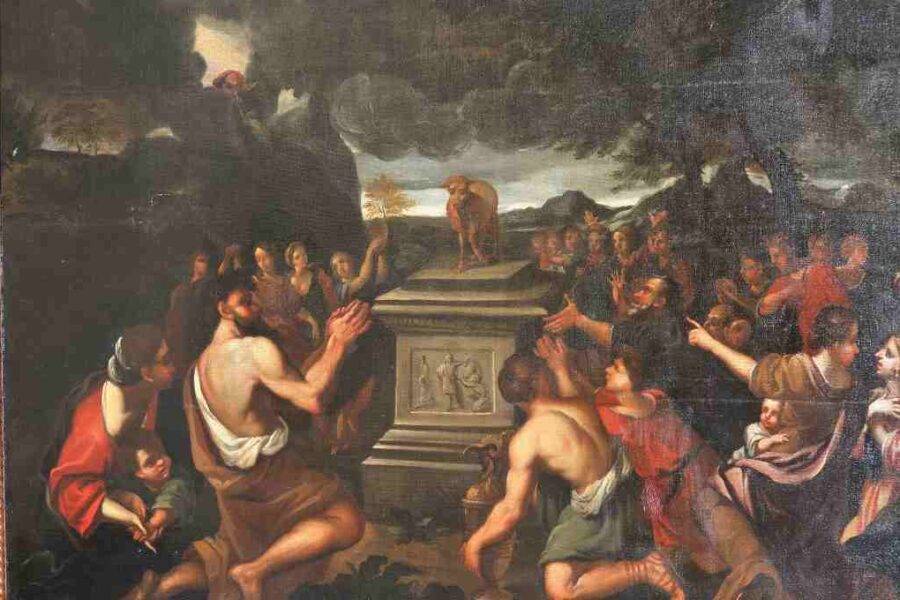
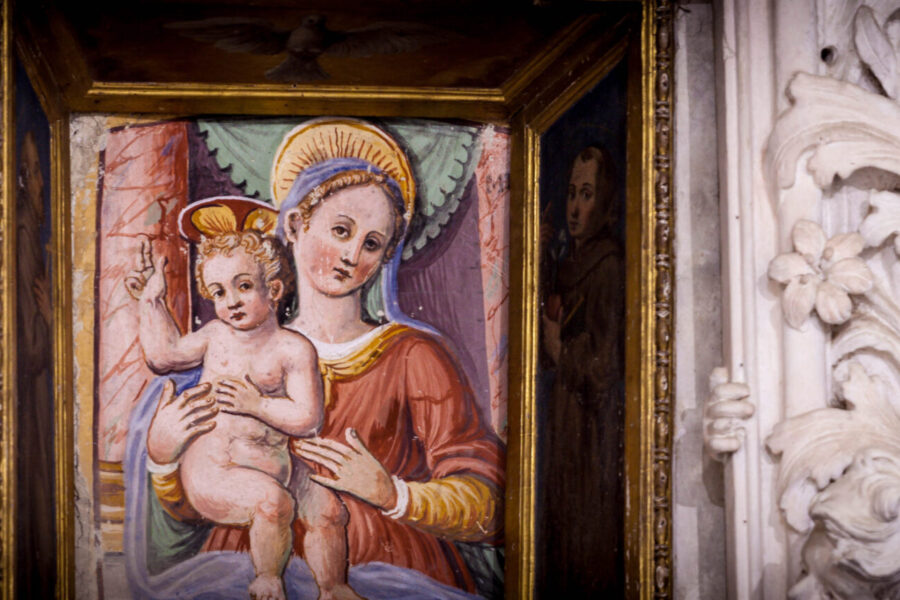
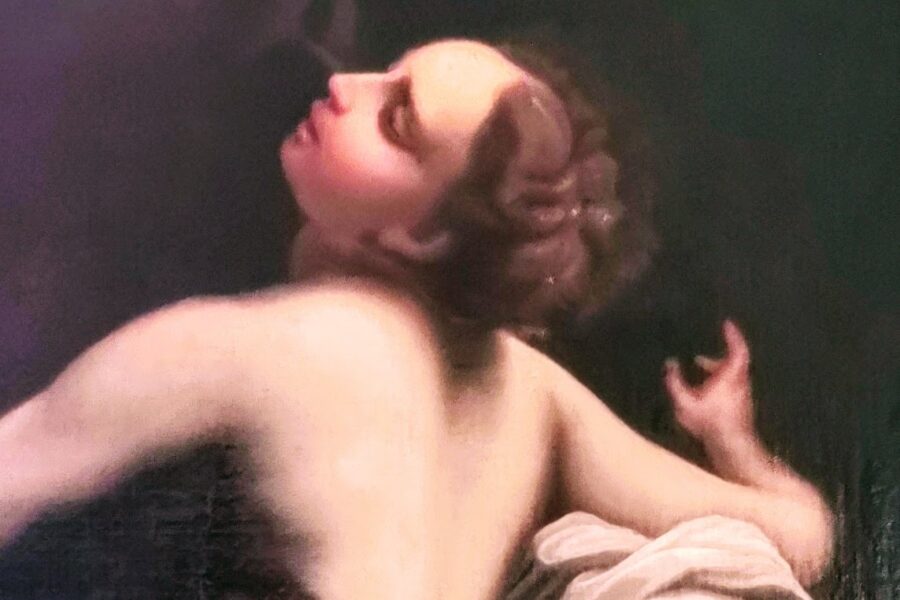
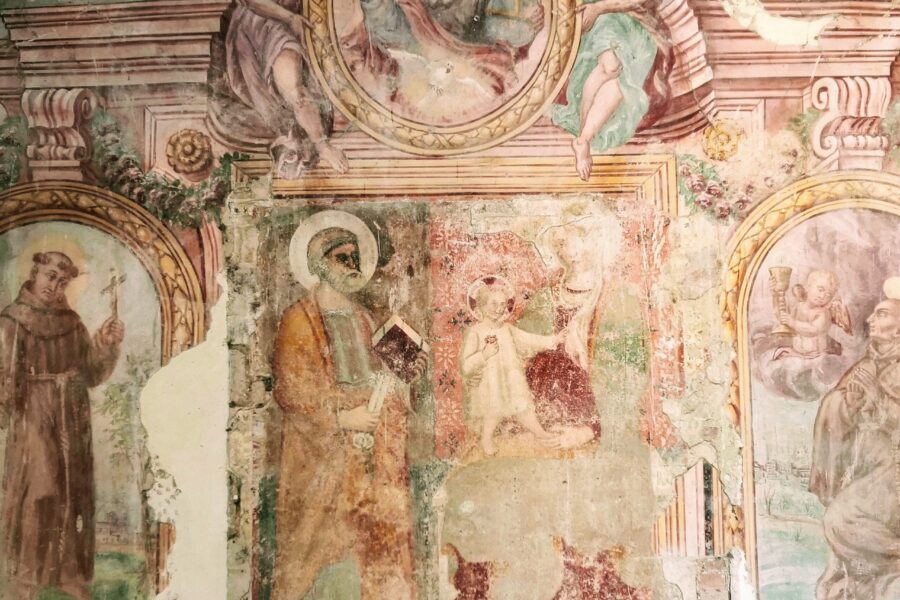
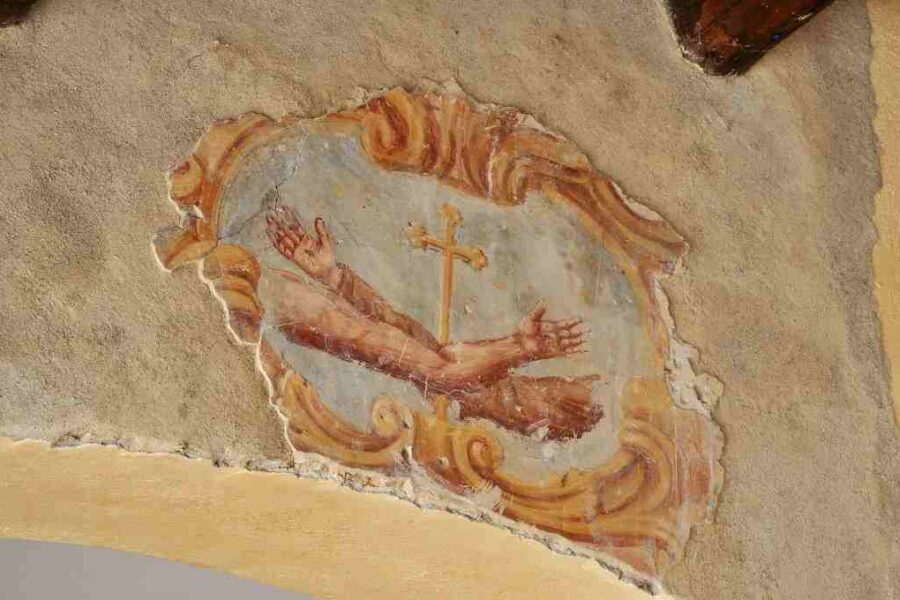
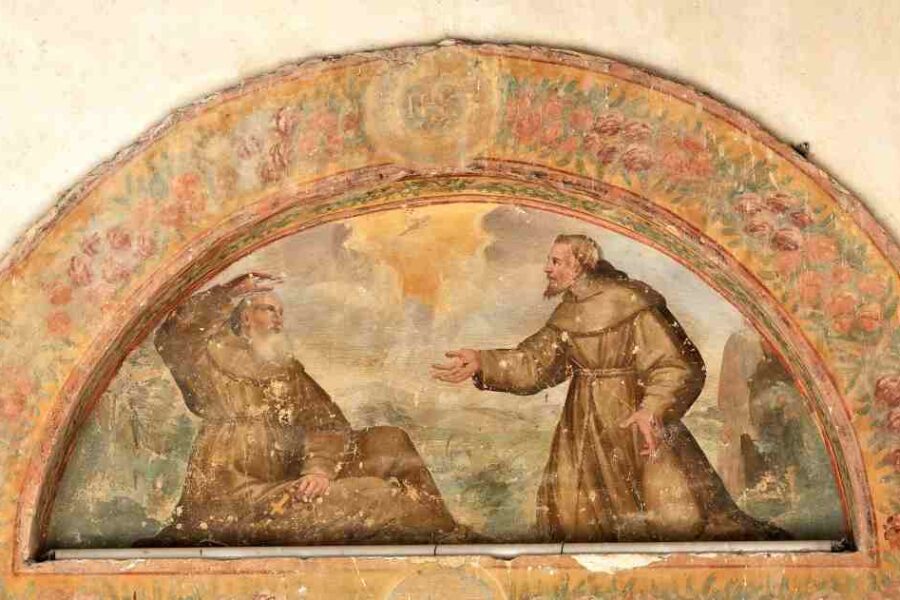
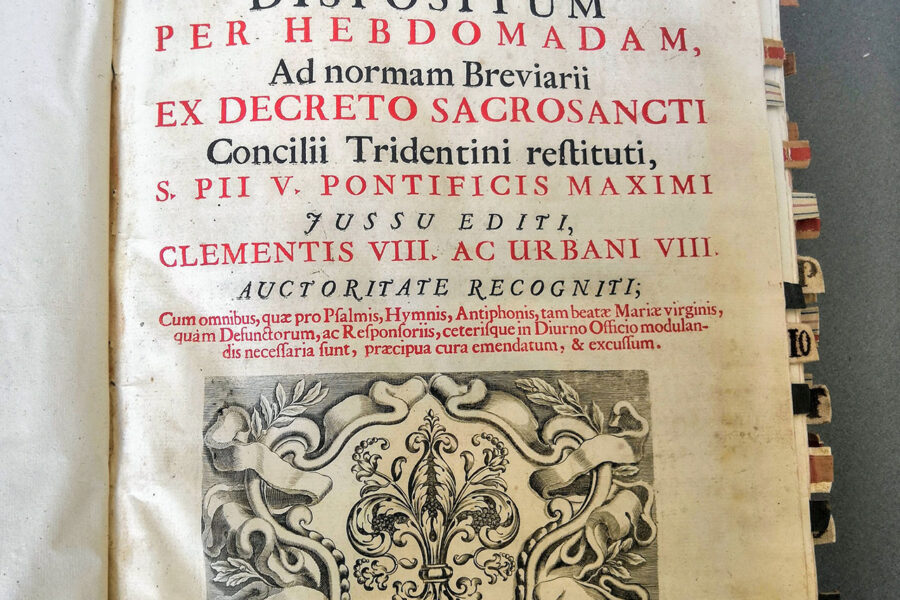
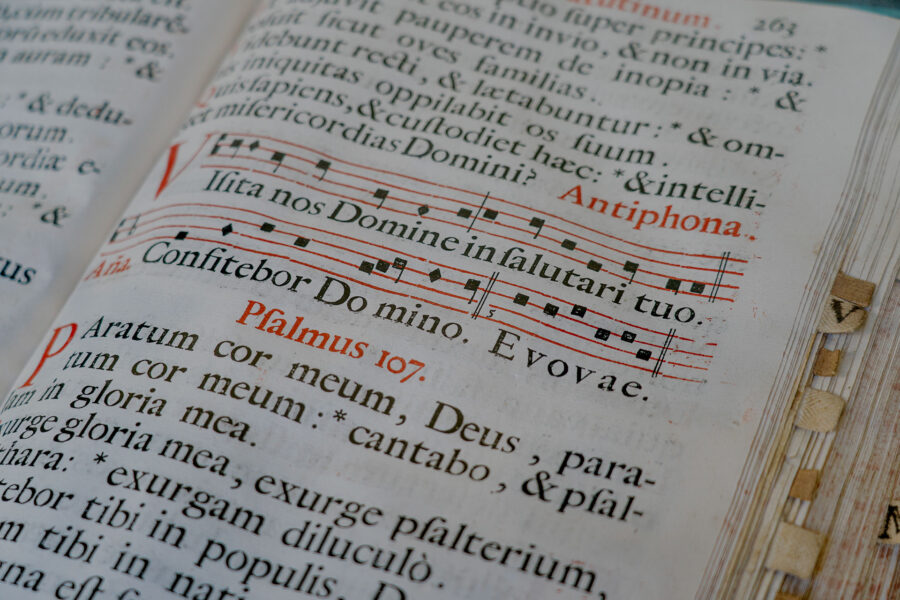
The forecourt and the portico in front of the facade of the current church were the site of the ancient church, presumably with an east-west orientation and in an orthogonal position with respect to the one now existing – as some engraved slabs found on site and recovered from the current property seem to suggest. These stones can currently be found in a small private antiquarian.
Chronicles
As the chronicles of the time describe in the above-mentioned account, major land reclamation works were undertaken before the building of the church which was planned to be made on wooded and rich-in-water terrain. The chronicles also speak of miraculous events and of some relics found in an altar belonging to the destroyed church.
Expenditure for this plant is 5836 ecus
The Chronicles
An extract from the written account by the construction manager follows:
“19th February 1614. The Convent of St. Peter sopra Acqua is so called – above the Waters – when I, the undersigned Hercole Astancolli, had the foundations constructed and after digging up to 22 and 25 feet below from the facade and up to the middle of the Convent, a so abundant quantity of water was found that it was not possible to see what foundation was (…)
And the wall of this convent remains mostly underground due to the depth of the foundations and as well as to the thickness of the Wall. (…)
And in not even five years, the Convent started to host persons and to be leased and it has been ever more enhanced with furnishings.
Expenditure for this plant is 5836 ecus “
The solemn installation of a sacred image of the Virgin Mary taking place on 8th December 1624 is also described. The image was in a little chapel of a farmhouse on the way “from Todi band” and filial devotion was nurtured by local people to this image.
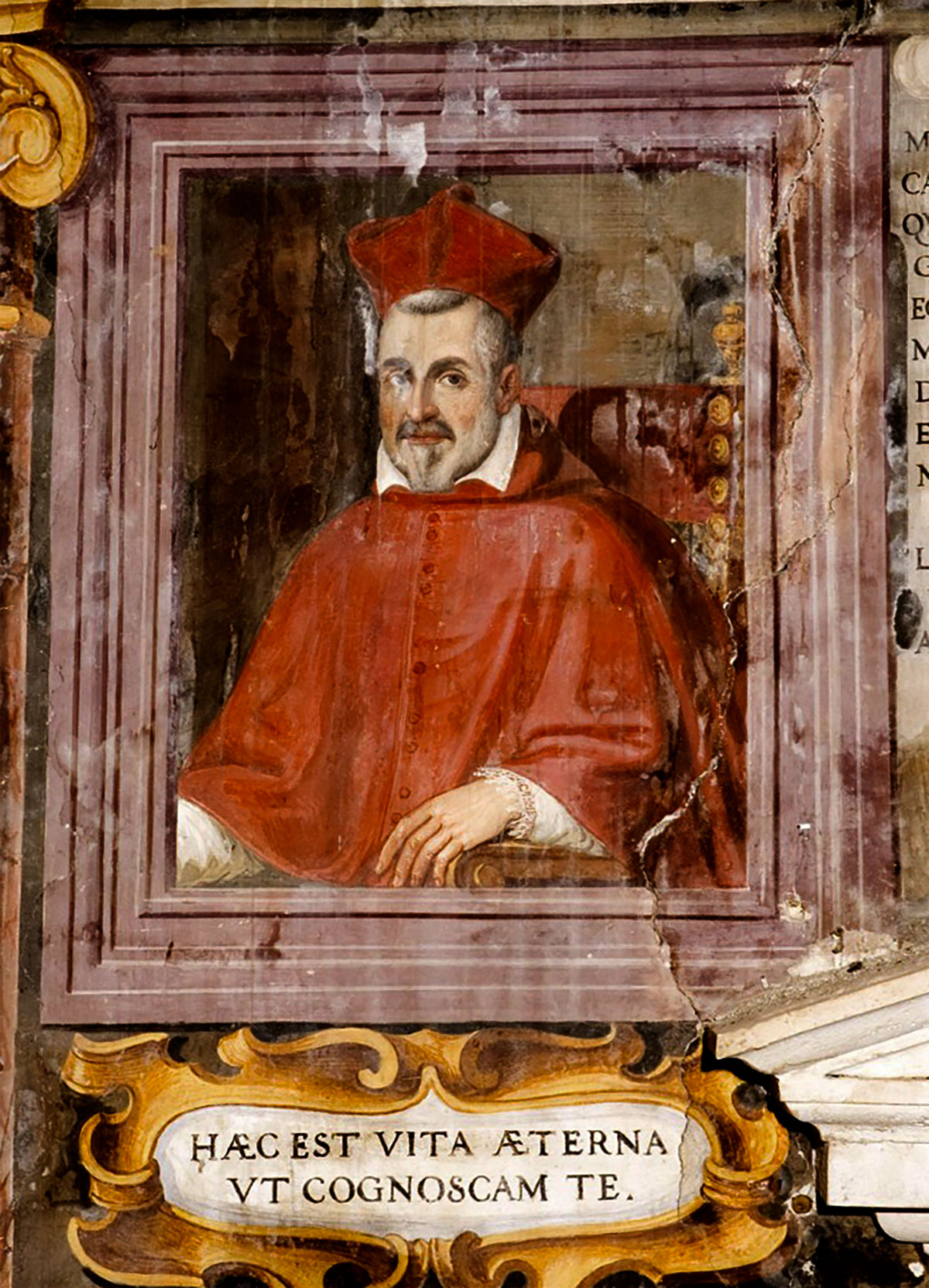
Was a great promoter and advisor of all the works of the church and perhaps of the construction – or better, renovation – of the convent. Indeed, he wanted to bring a community of Reformed Franciscans to St. Peter to replace the weakened collegiate formed by a prior and four canons at the time. These came from nearby Busseto.
Before starting the work, the Cardinal wanted to know the views of the local Reformed Superiors (branch of the Franciscans), because he wanted to entrust it to them.
The Custodian in charge in those days had this question delivered to all the local Reformed Superiors: “The Eminent Cardinal Landi, Bishop of Todi, wants to build for us a convent in one of his churches called St. Peter, near the land of Massa, if however, the friars are happy with this decision. Therefore, the question is: Are you available to accept this convent?”
The answers were all positive and there were those who explained the reason why they accepted: “Because the Cardinal has always shown benevolence towards the Reformation.”
An elegant stone coat of arms placed on the church portal (originally maybe it was inside) recalls the generous work of the bishop. Unfortunately, this coat of arms has been recently stolen and its traces have been lost. Just below the coat of arms, above the entrance to the church, the stone Armoury of Cardinal Landi reports this inscription: “Marcellus Lantes Romanus
Cardinalis Amplissimus et Episcopus Tudertinus, Beneficetissimus Coenobium hoc suis sumptibus , Fondandum et perficiendum Curavit.
(An. Dom. 1618”)
The names of managers and foremen committed in the construction site of St. Peter are today known from some documents survived. Among these, there are inhabitants of Massa and Todi, but also Lombards. They also provided for water regulation, wood arrangement and fencing of the whole compound.
Given the size of the convent, we can think that an intense pastoral and missionary activity took place here in St. Peter according to the Rule of the Reformed Franciscan Order, for the benefit of the community of Massa Martana.
Cardinal Landi imposed these conditions on the Franciscans: ” they are to fulfill their obligation, yes, by listening to Confessions, visiting the dying and particularly during the Holidays, preaching those Things that the new Lateran Roman Council points out.” as well as to provide the convent with the established number of clerics.
In the 18th century, the community of friars was reduced until the suppression – as everywhere in the Catholic world – because of the Napoleonic domination and even until the definitive abolition in the second half of the last century (19th century) on the basis of rigid and anticlerical laws under the Unified Italy.
The compound – church and convent – was then split into a State-owned part (the church) and another municipal part (the convent) which was, for some decades, the town’s school.
Since the 1960s, the convent has become private property and the buyer has tried to restore life to the now crumbling compound by renovating and enhancing not only the convent, but also the church and the wood.
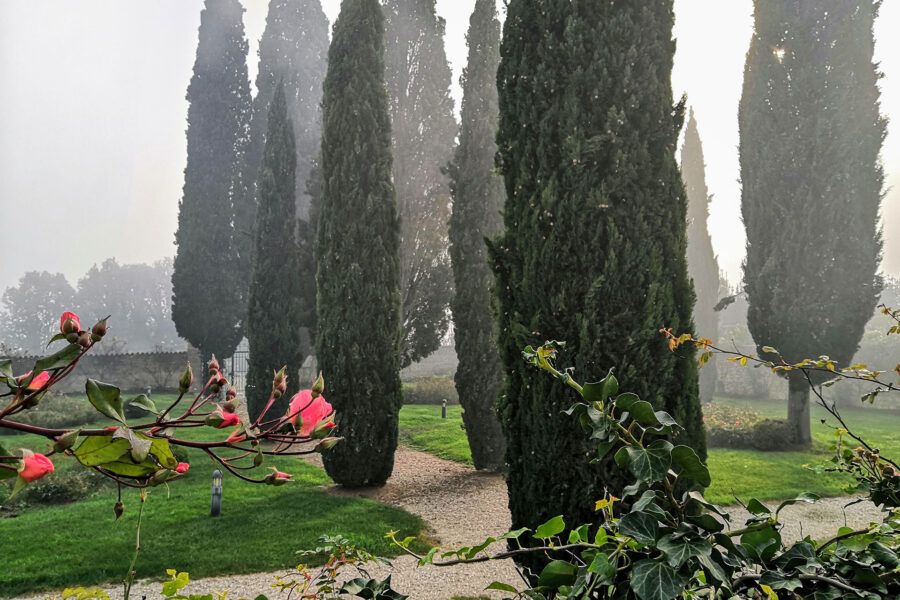
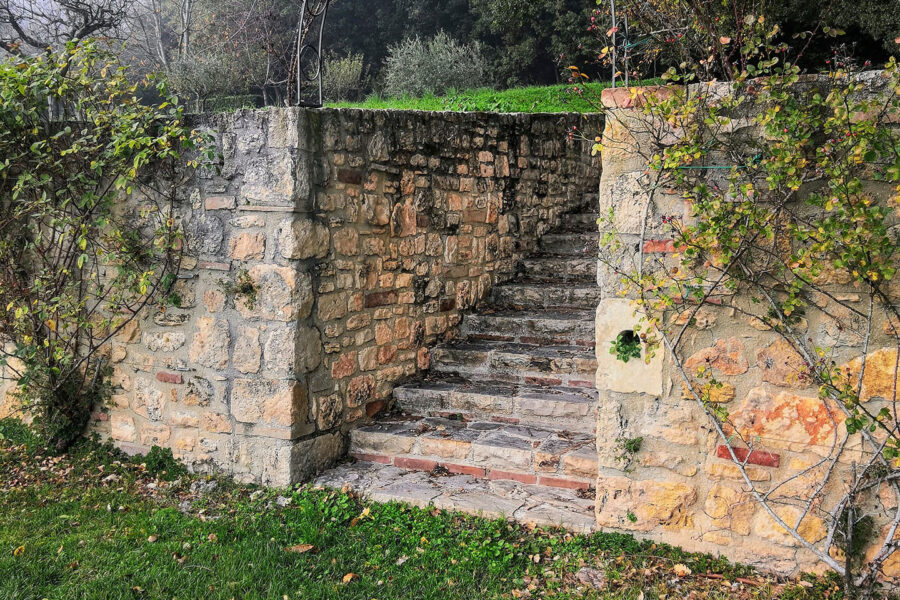
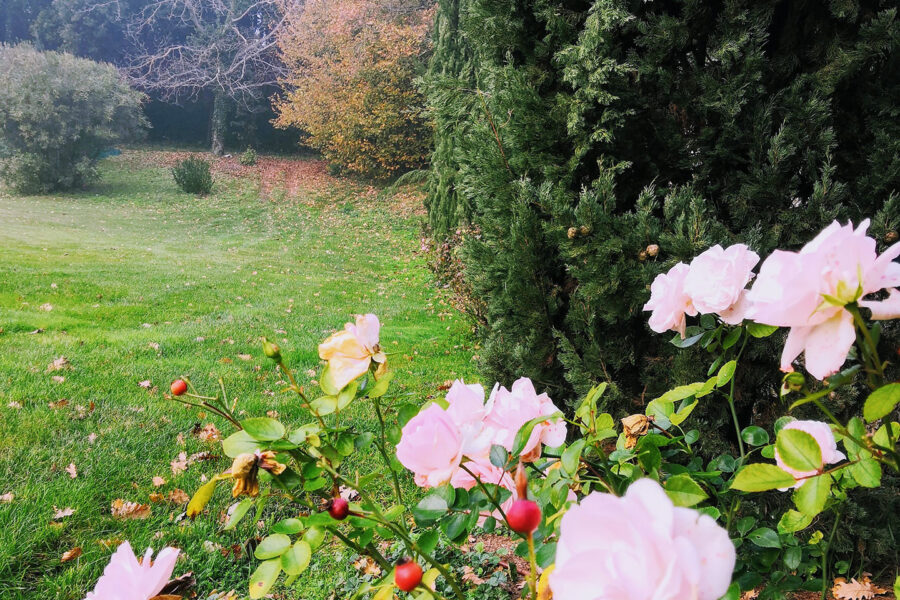
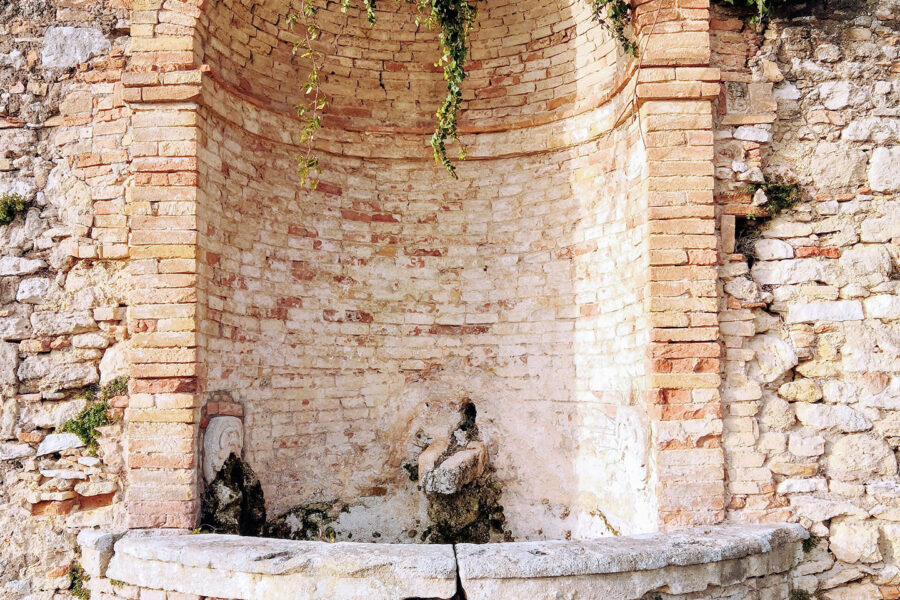
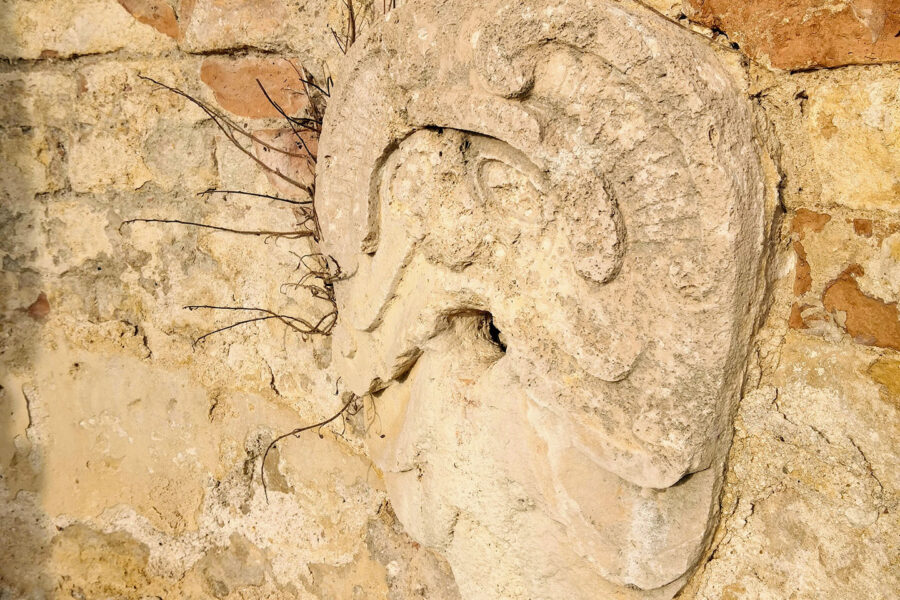
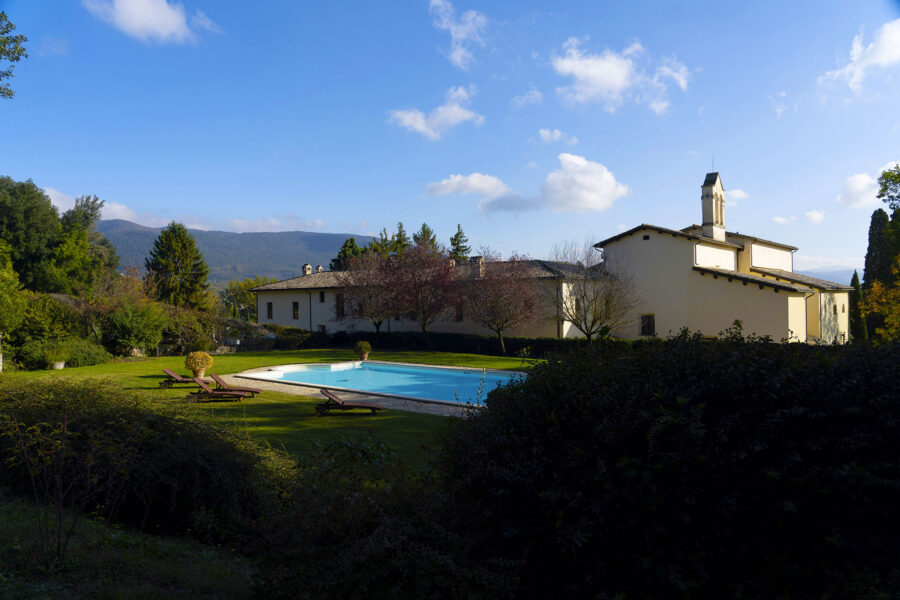
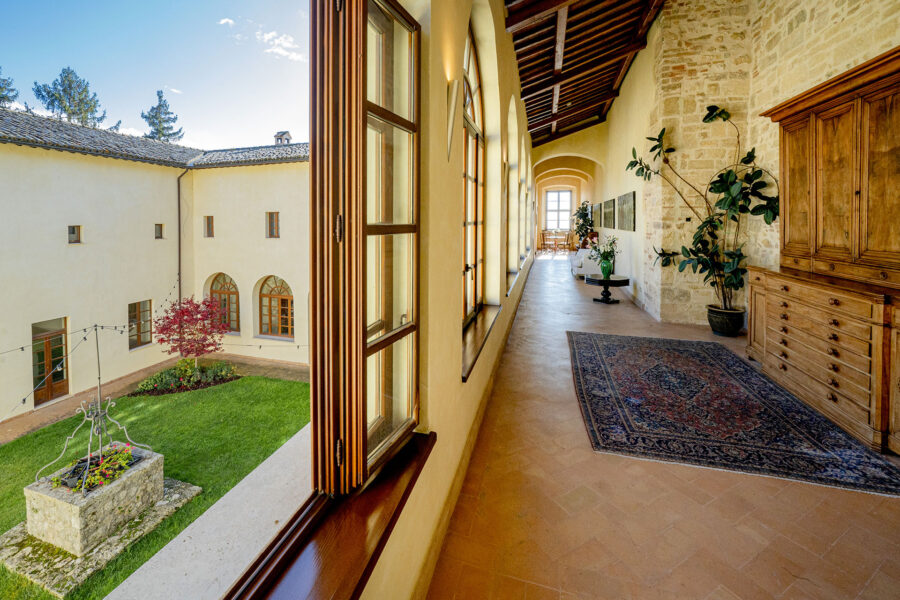
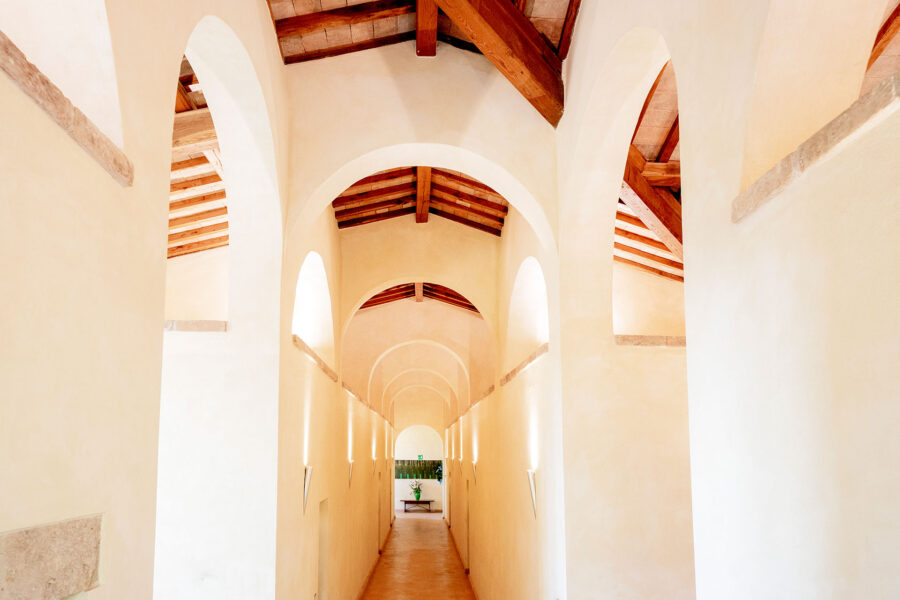
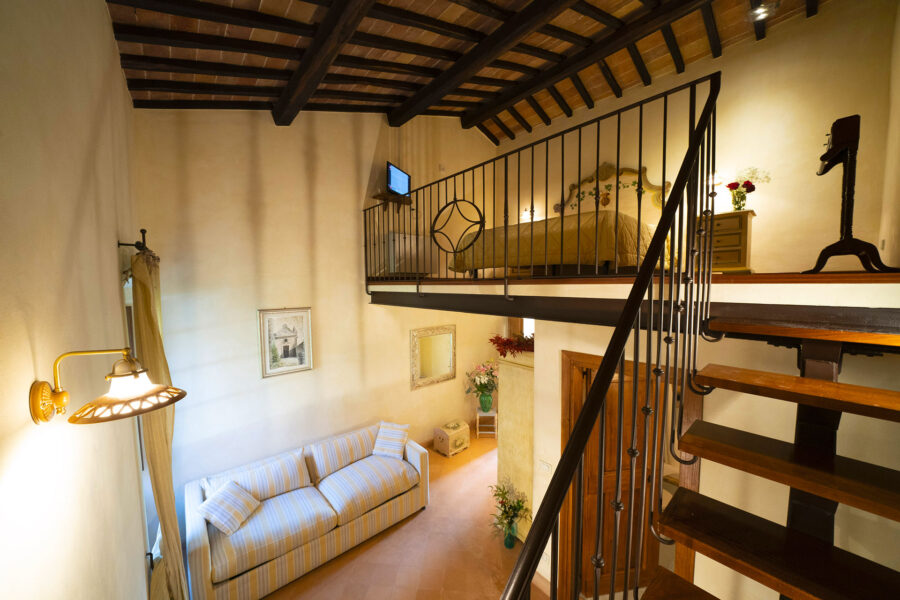
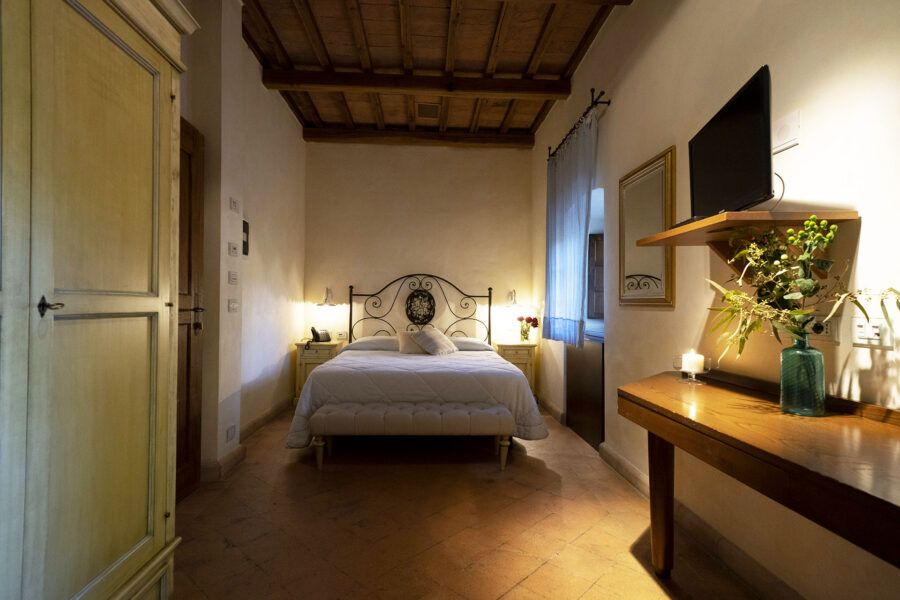

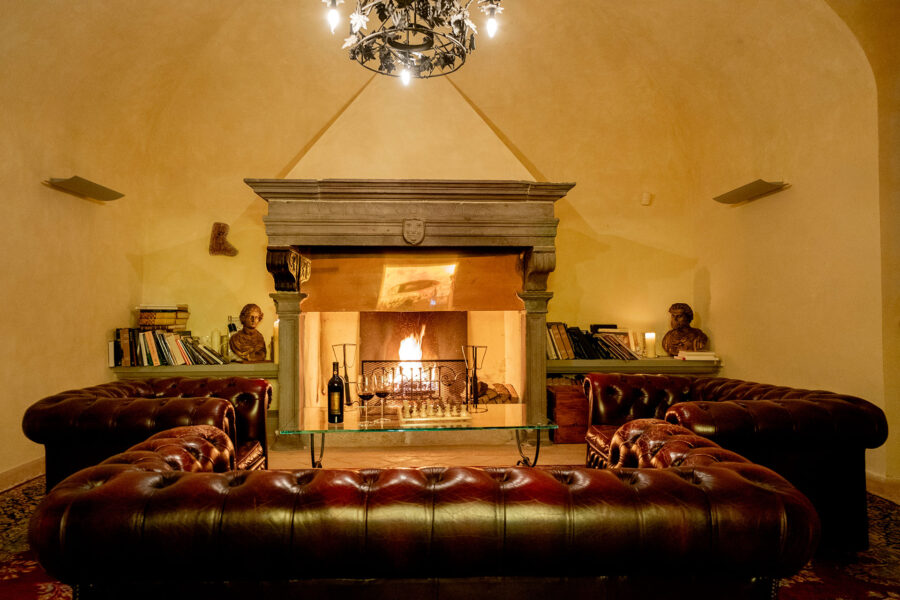
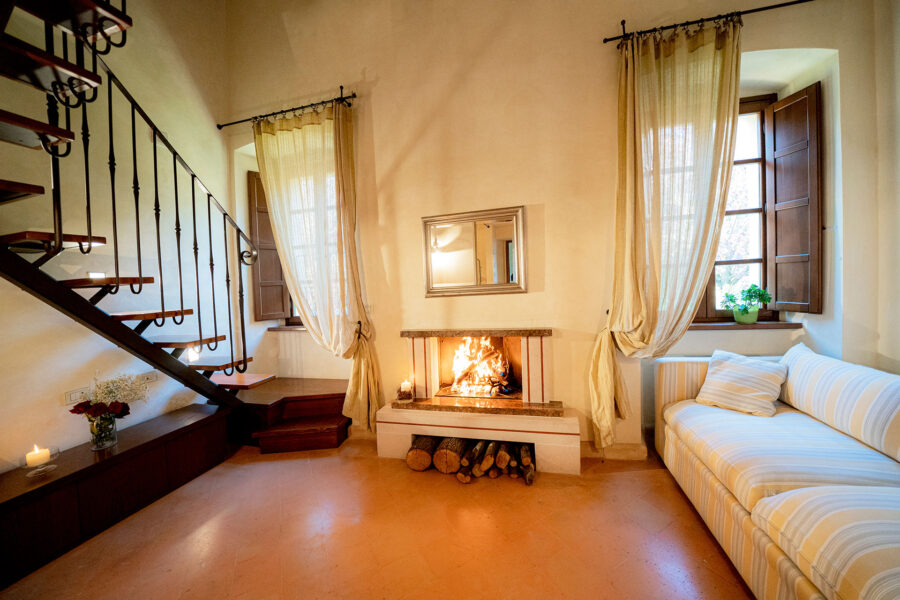
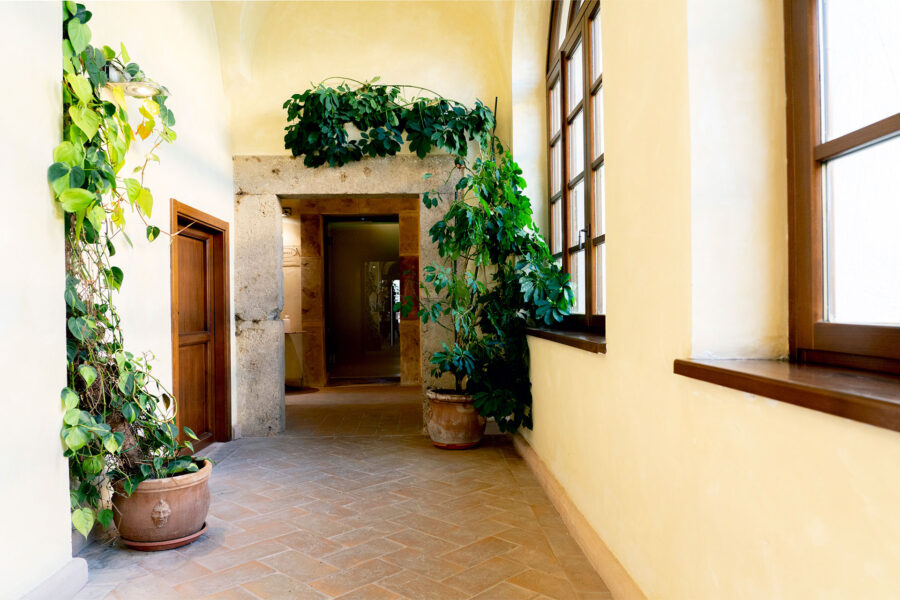
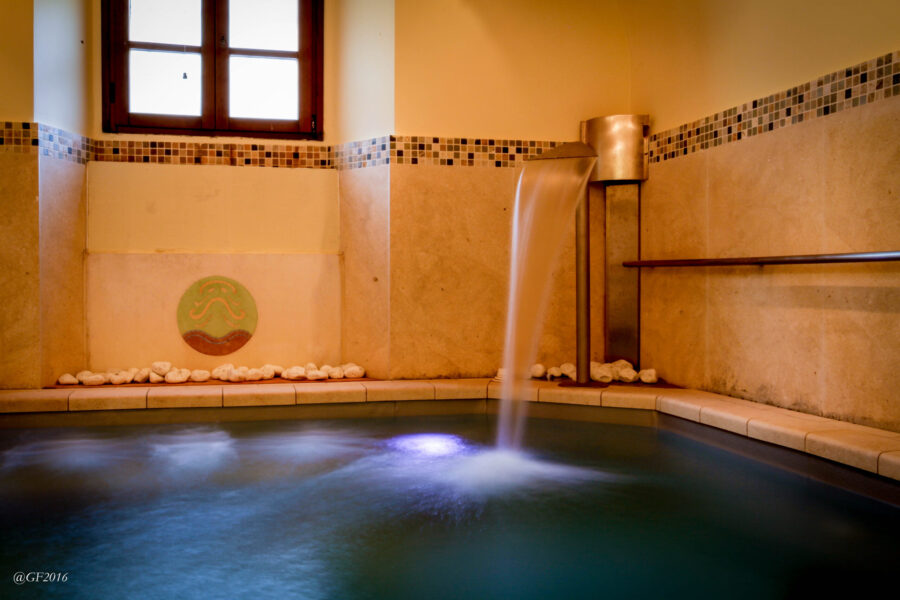

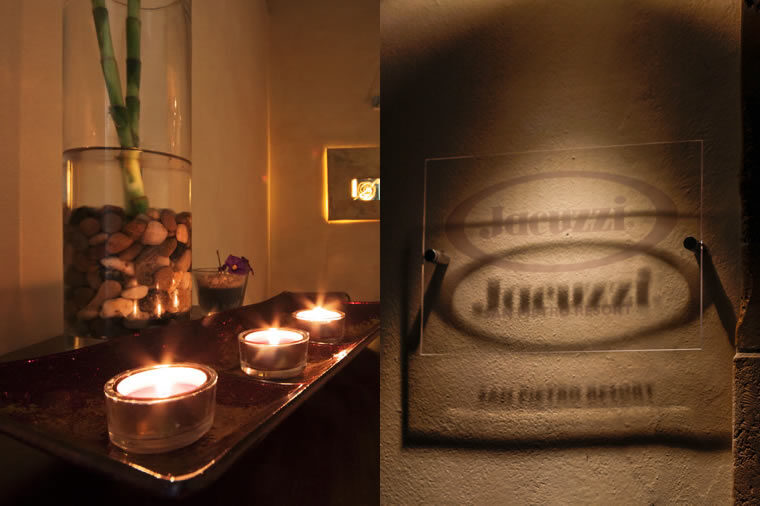
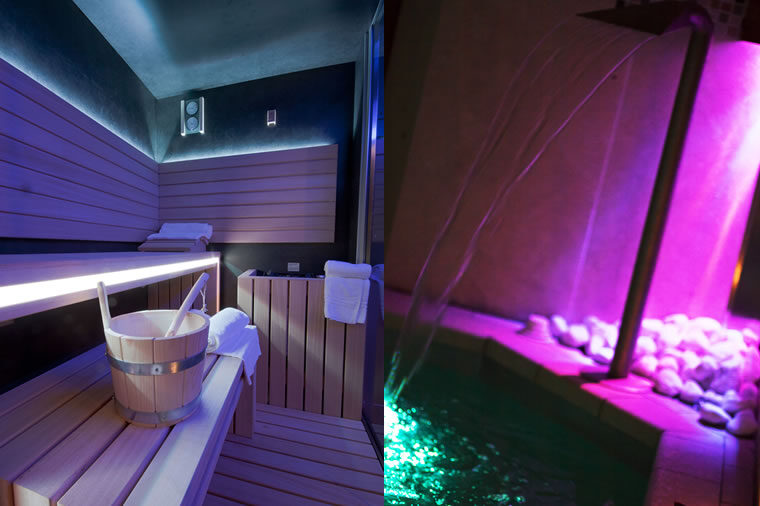
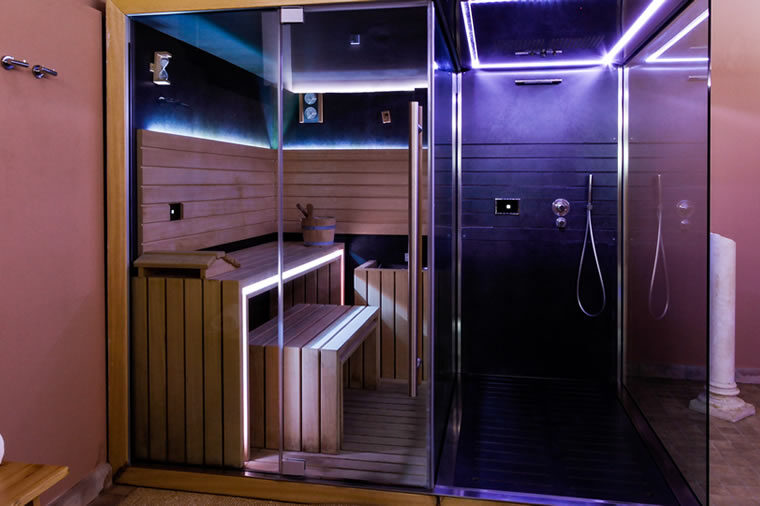
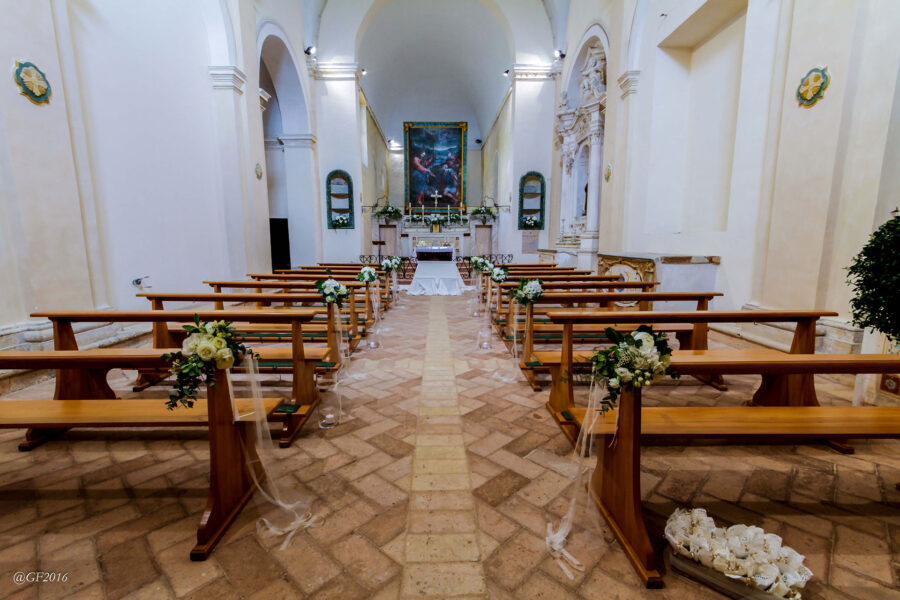
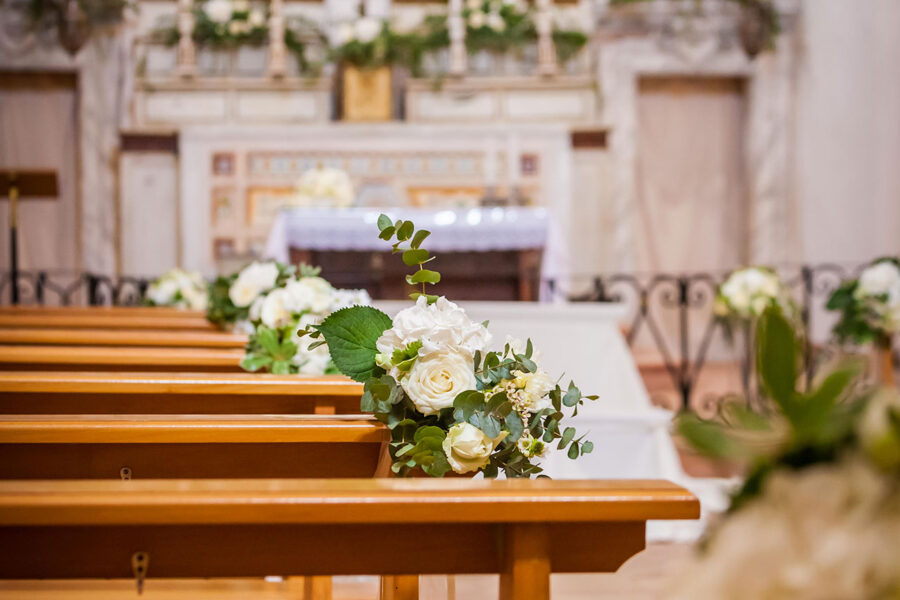
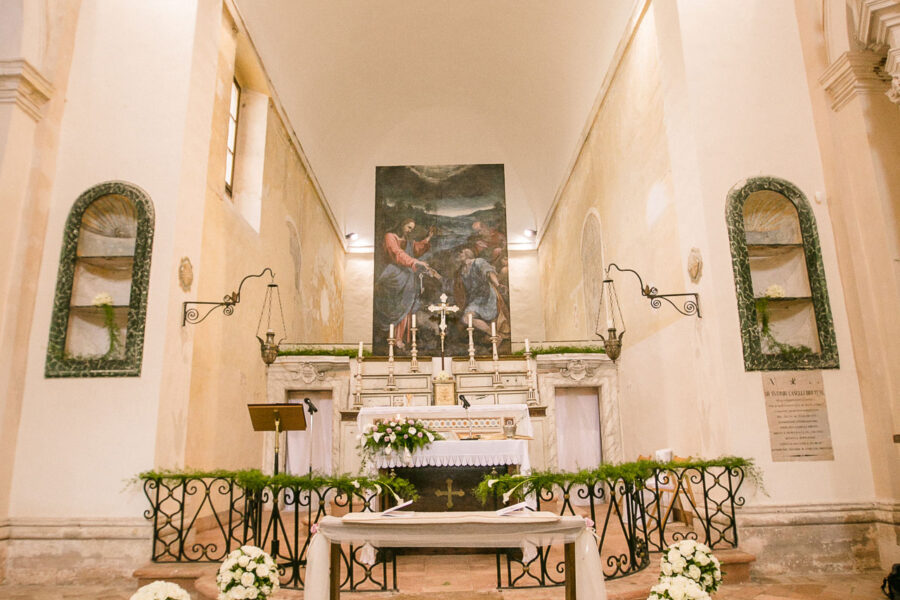
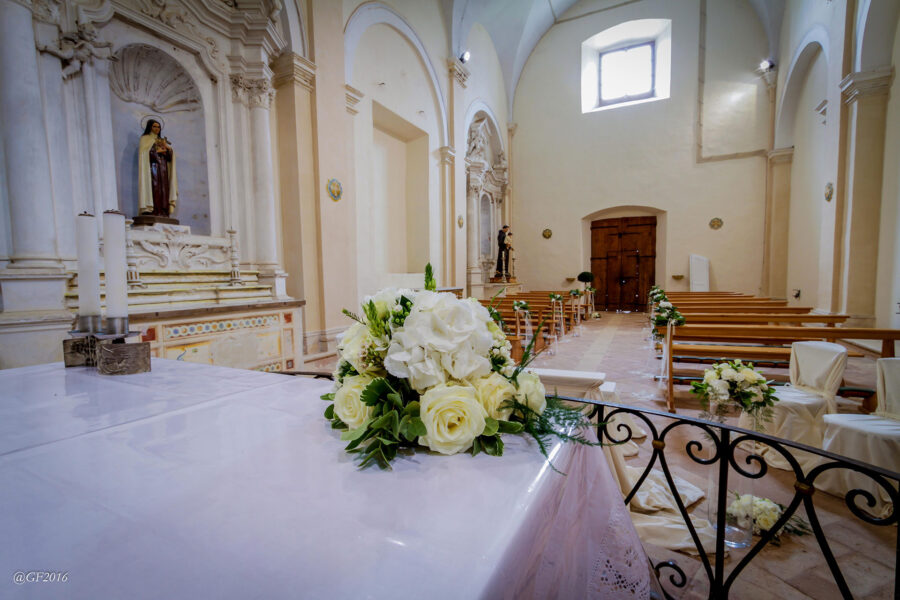
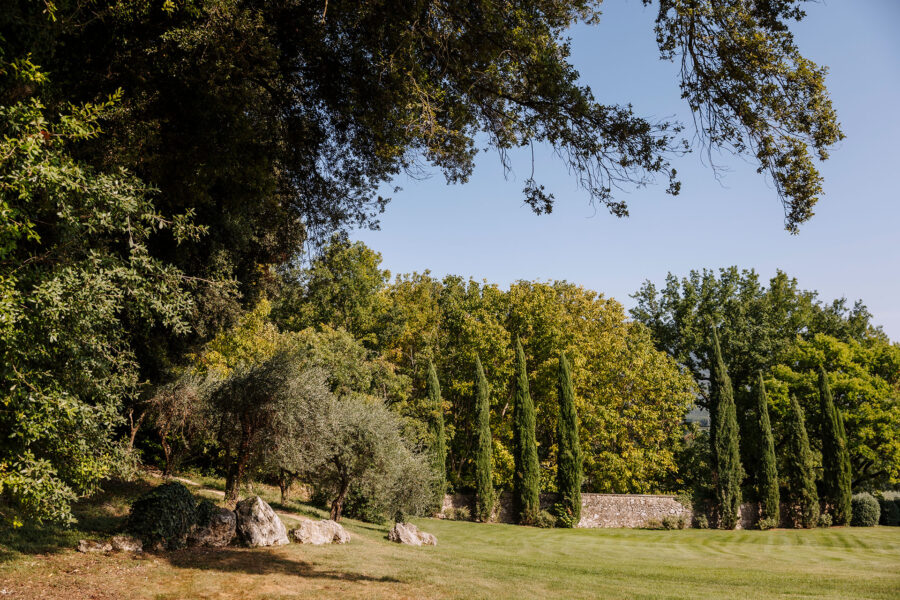
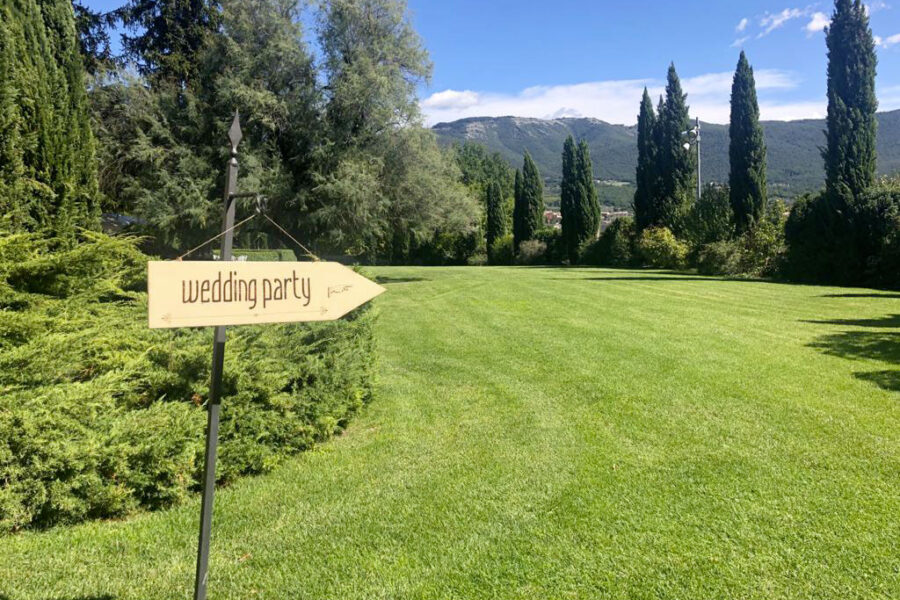
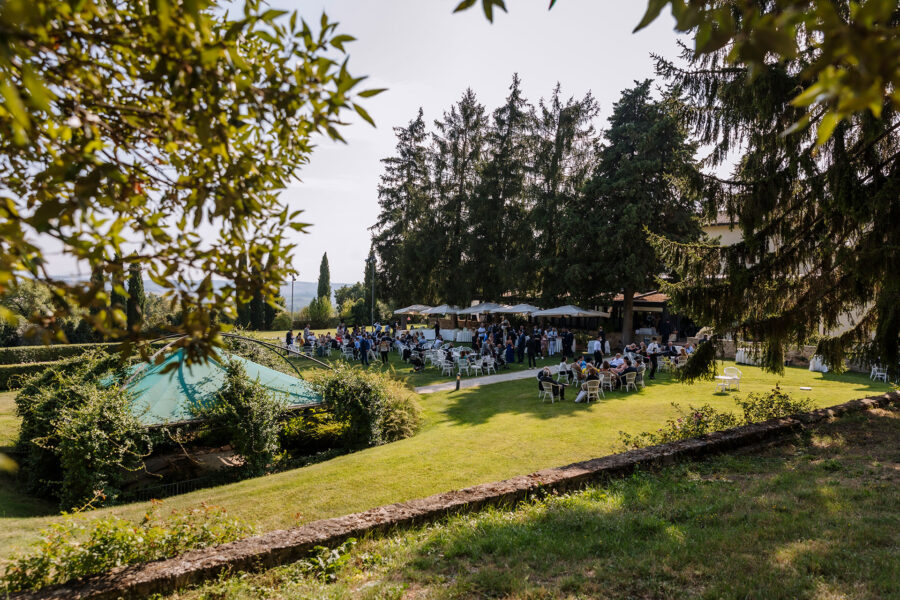
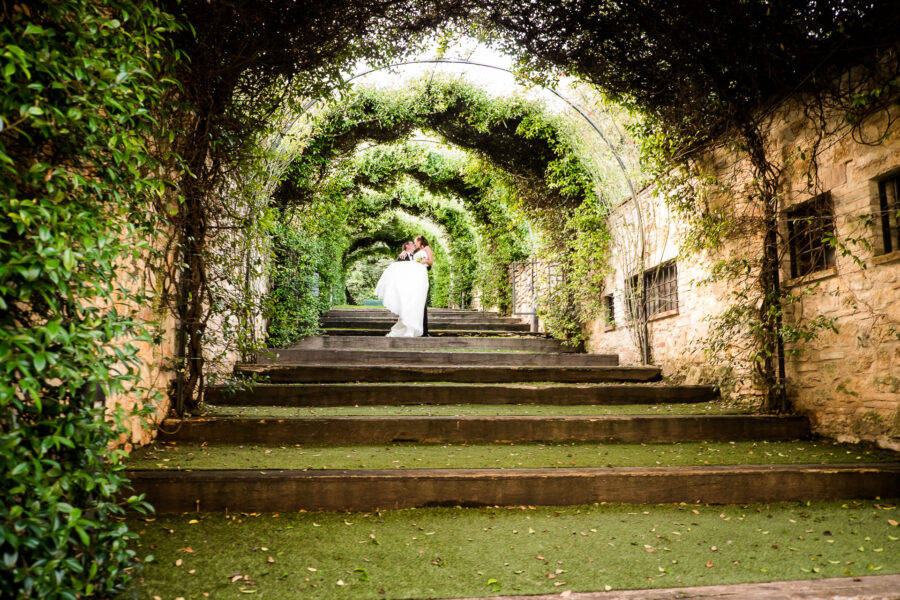
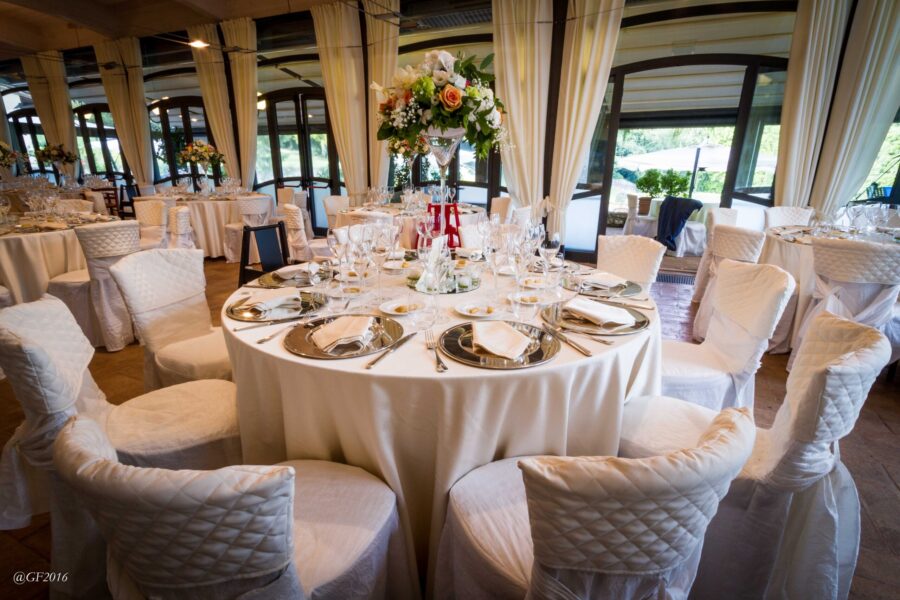
Documentation
How is it possible to piece together the most ancient historical facts of this settlement, without any record?
The portico
The portico, probably the seat of the previous medieval church The fresco in the lunette above the entrance door to the convent was also made by Polinori and depicts St. Francis re
The convent
The convent is deployed around a cloister with a central cistern, now enclosed by ancient arches. The entrance to the corridor is decorated with frescoes illustrating the life and
The church in late Mannerism style in stile
The church – built between 1614 and 1624 – presents a late Roman Mannerism style with a single nave, altars on the right side and a chapel embellished with original stucco deco
The Roman necropolis and the ever-sacred vocation of the place
The sacredness hovering around this place is still evident. Its features – typically halfway up the hill – make us think of earlier Etruscan and later Roman temples. During the
The caves in the woods
Actually, there are some archaeological records which may help. It deals with cavities dug in the natural tuff bastion delimiting the compound of St. Peter to the north. The first,
contact us
Information request
For any questions or requests for information, do not hesitate to contact us. Fill out the form below. Our staff will answer you in a short time.
